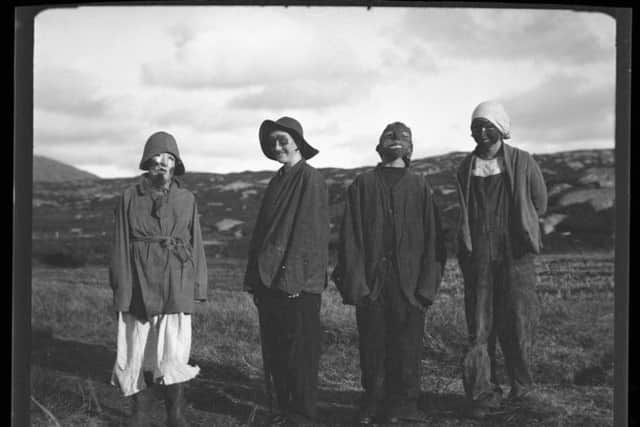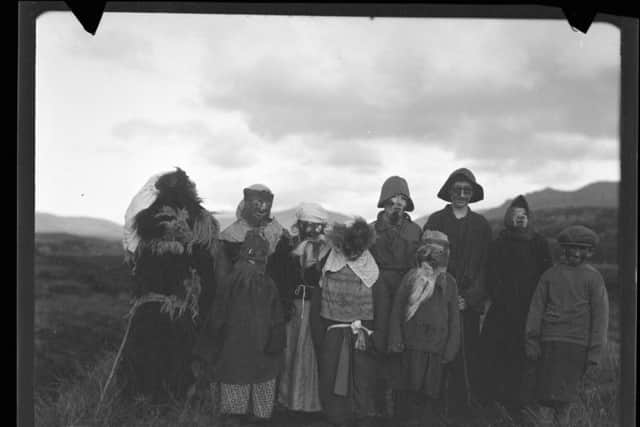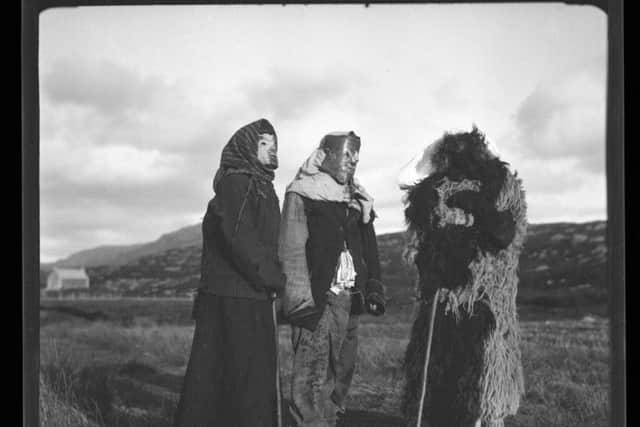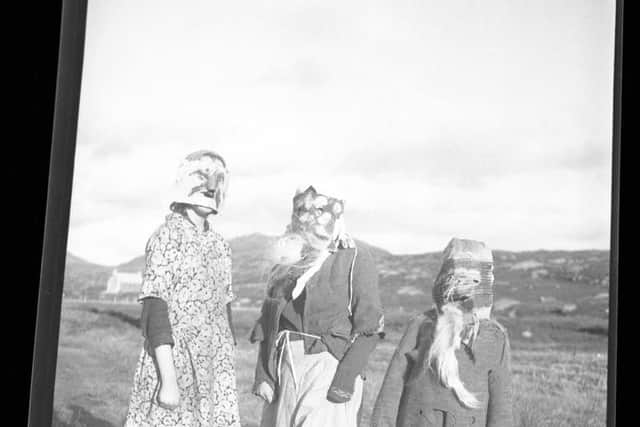Scotland’s Halloween traditions: the terrifying costumes and strange rituals of our ancestors
This article contains affiliate links. We may earn a small commission on items purchased through this article, but that does not affect our editorial judgement.
and live on Freeview channel 276
You’ll hear the cry of ‘trick or treat’ and see carved pumpkins on doorsteps and in windows, but these are relatively new, Americanised additions to the Scottish Halloween, an occasion still connected to a host of long-standing native traditions.
The practice of donning costumes and going out ‘guising’ remains the most popular Halloween tradition in Scotland - and this is something that has been going on since long before any of the Marvel films came into our collective consciousness.


Advertisement
Hide AdAdvertisement
Hide AdBy disguising themselves, youngsters believed they would blend in with wandering spirits and remain safe from harm.
After performing tricks or songs, guisers were then given gifts – primarily to “help ward off evil.”
A stunning photo collection amassed during photographer Margaret Fay Shaw Campbell’s lifetime, from her arrival in Scotland in 1929 to her death in 2004, contains spine-chilling images of the terrifying costumes created by a community on South Uist during Halloween 1932.
Looking back on the traditional costumes, you can understand why the guisers blended in with the creatures of the night, and it shows the lengths that children went to make their own costumes.


Advertisement
Hide AdAdvertisement
Hide AdThe youngsters wore sheepskins, haystack wigs and rope scarves on Halloween, or as it was known locally, Oidhche nan Cleas (‘Night of Tricks’).
Some would wear scraped-out sheep skulls and one boy in Margaret’s photo collection spent an entire day painstakingly peeling the skin from a sheep’s head to make his costume.
The gìsears then went from house to house, lighting the way with burning peats and singing a song or telling a fealla-dha (joke) in return for a treat, which was usually a scone or a bannock.
Today Margaret’s priceless collection of almost 9,000 images is kept in the archives of Canna House on the Isle of Canna, where she lived with her husband, the renowned Gaelic folklorist John Lorne Campbell, from 1938 when they bought the island.


Advertisement
Hide AdAdvertisement
Hide AdThe images have been pieced together in the video in this article, which also contains a snippet of a rare recording of a traditional Gaelic song or ‘puirt a beul’. The island is now in the care of the National Trust for Scotland, and you can get free access with an NTS membership.
What other Scottish Halloween traditions are there?
As well as Scotland’s expertise in creating the most frightening Halloween costumes imaginable, some of the traditions we may think came from the United States, actually started on our side of the pond.
Before the pumpkins arrived, scary faces were carved into neeps (turnips) to create lanterns that would scare off the ghouls who wandered the streets (as any Scottish parent of a certain age will tell you, the pumpkins are much easier to carve).


Apple dookin’, where people try to grab an apple floating in a basin of water without using their hands, also has its roots in ancient Celtic tradition.
Advertisement
Hide AdAdvertisement
Hide AdAnd to resolve an old argument, you are allowed to hold a fork between your teeth to spear one – if your own gnashers aren’t quite up to the job.
Nor are there any hands allowed when it's time to try and take a bite of sticky treacle-covered scones dangling from string.
Another tradition, and one which is slipping into obscurity, was the practise of nut burning – where couples would throw nuts in a fire.
If they burned quietly, the union would be a happy one. However, if they hissed, crackled or popped apart, a turbulent future lay ahead.
Advertisement
Hide AdAdvertisement
Hide AdThere are plenty of Halloween events taking place around Scotland in 2019, where you can experience some of Scotland's enduring fright-night traditions.
Why not check out the Samhuinn Fire Festival on Calton Hill to celebrate the night when the spirit world meets ours?
